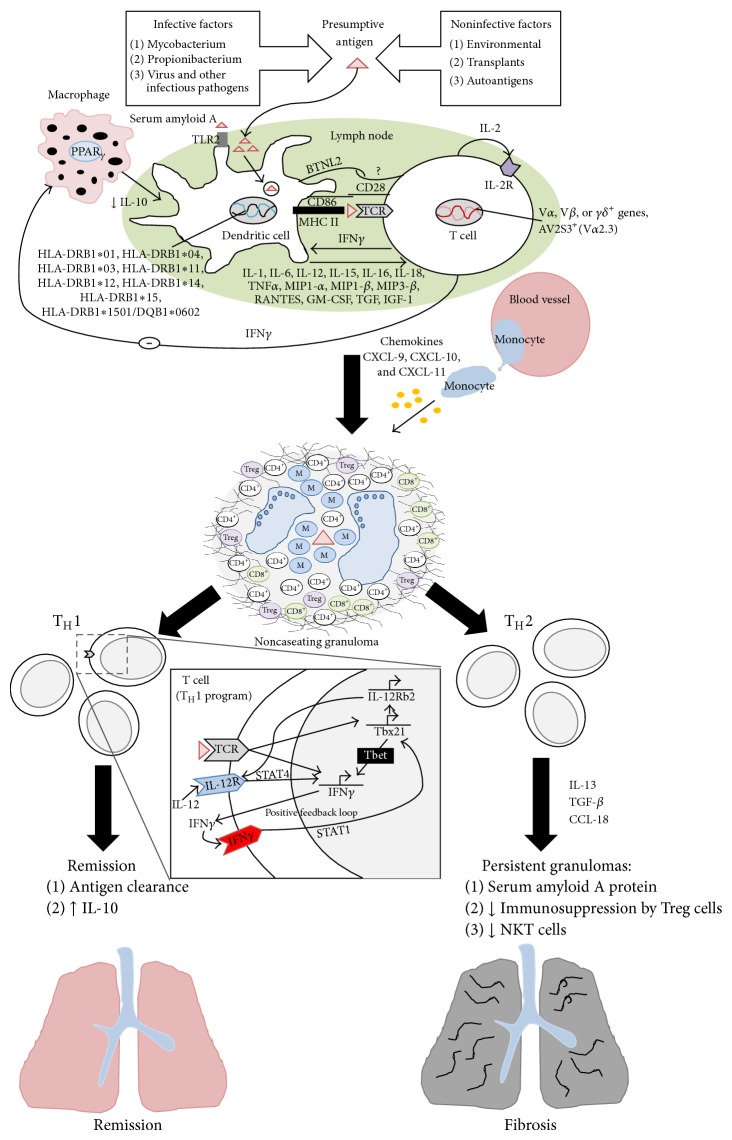Figure 1.
The immunopathogenesis of sarcoidosis (a proposed model). The presumptive sarcoid antigen is engulfed by circulating dendritic cells. Serum amyloid A proteins can also interact with Toll-like receptor 2 and be presented to T cells via major histocompatibility complex Class II to specific T cell receptors (TCRs) along with processed antigen peptides. Ligation of costimulatory molecules CD28, CD86, and BTNL2 optimises the activation of T cells. Thereafter, a myriad of inflammatory mediators is released. Activated T cells are highly TH1 polarised. They release IL-2 which causes clonal proliferation of T cells. Furthermore, upon TCR activation, T-bet production increases. T-bet upregulates and perpetuates the production of IFNγ which facilitates granuloma formation. Antigen clearance and increased IL-10 levels facilitate disease remission. Disease chronicity results in a predominance of TH2 cytokines which leads to lung remodelling by fibrosis (adapted from: [2, 5, 12, 14–19]).

